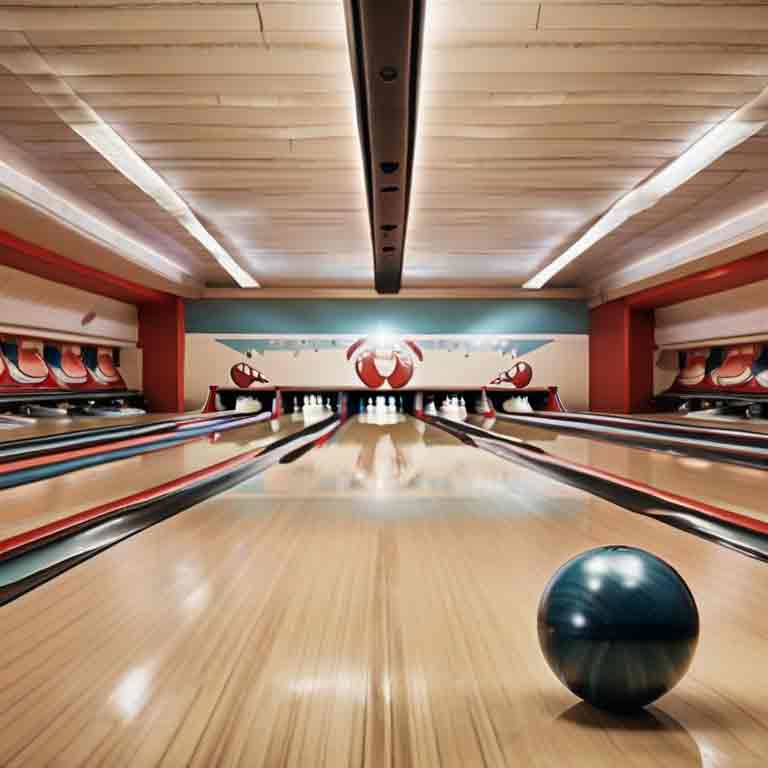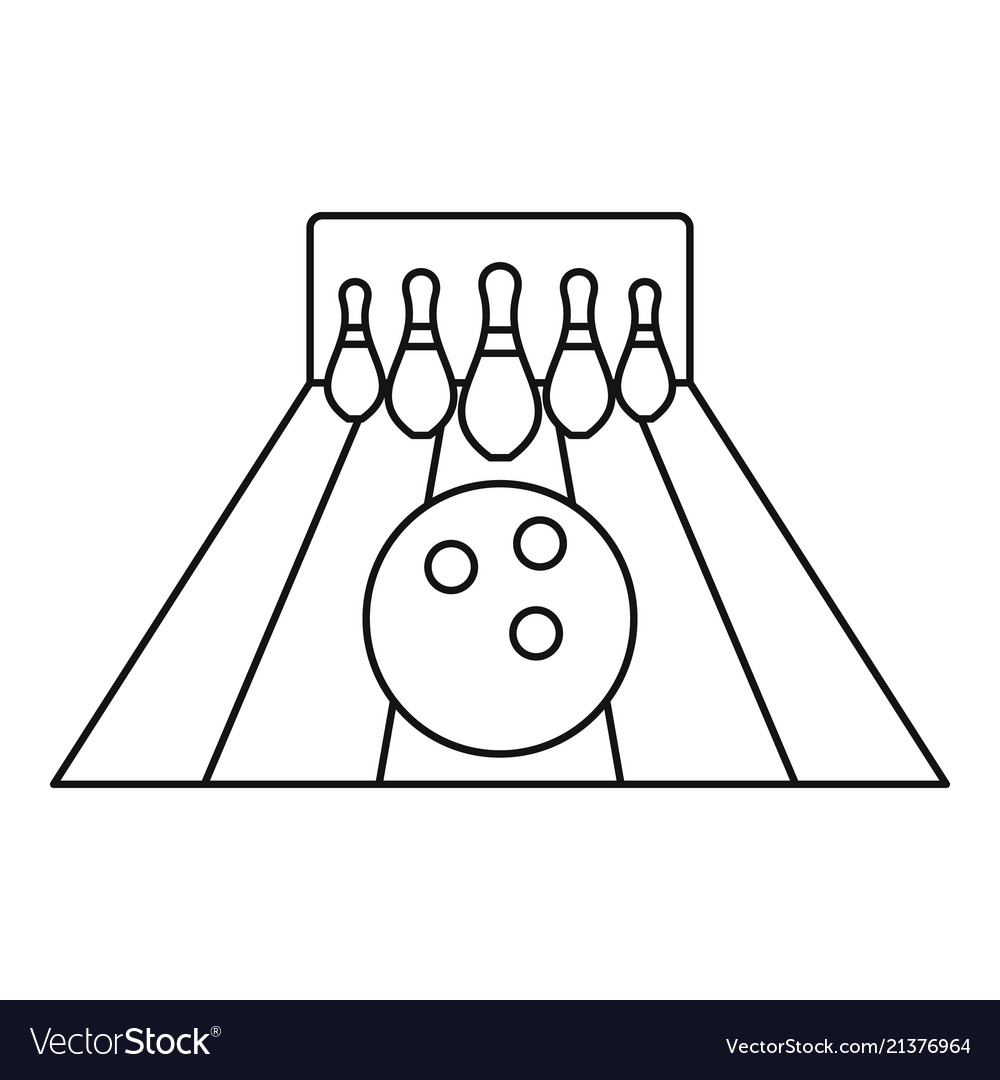Length of Bowling Lane in Feet: Strike with Precision!
Length of bowling lane in feet! A standard bowling lane is 60 feet long from the foul line to the headpin. This measurement includes the approach area but not the pin deck and pit.
Bowling is a popular sport enjoyed by millions worldwide, with lanes featuring a specific set of dimensions for play. Understanding the length of the lane is crucial for both players and bowling alley designers. The regulation lane length contributes to the game’s consistency, ensuring players compete on a uniform playing field.
A deep understanding of the lane measurements can enhance a player’s technique and the maintenance of the facilities. Enthusiasts who appreciate the intricacies of the game often take a keen interest in these details, which can be vital for those looking to excel in bowling or operate a bowling center. Whether you’re a professional bowler or a casual player, knowing the exact length of the lane can inform your play strategy and help you make the most of your bowling experience.
Understanding The Standard Length Of Bowling Lane In Feet
When stepping into the vibrant and lively atmosphere of a bowling alley, one might not immediately ponder the dimensions that make up this classic recreational sport. However, the length of a bowling lane is a crucial factor in the gameplay, contributing to the challenge and excitement that makes bowling both enjoyable and competitive. The standard bowling lane length plays a significant role in the game’s uniformity and has an intriguing evolution that shapes the experience of bowlers worldwide.
History Of Bowling Lanes
Bowling’s rich history stretches back centuries, with variances in rules and equipment seen across different cultures. However, over time, standardization became paramount to ensure consistency in competitive play. The journey to the modern standard bowling lane length is a fascinating one that reveals the sport’s evolution.
- The earliest records of bowling date back to ancient civilizations with differing lane lengths.
- In the late 19th century, the sport began to see more formalized rules.
- It wasn’t until the 20th century that bowling organizations agreed upon a uniform set of dimensions for lanes and equipment.
Importance Of Standardization In Bowling Lane Length
Standardization in the length of bowling lanes is not merely a matter of formality; it is intrinsic to the core of competitive bowling.
- Ensures fair play: A standardized lane allows players to compete on an equal footing, irrespective of the venue.
- Regulates equipment design: Manufacturers can produce balls and pins that interact with lanes predictably.
- Facilitates player skill development: Bowlers can hone their strategy and technique with the confidence that conditions remain constant.
The officially recognized length of a regulation bowling lane is 60 feet (18.29 meters) from the foul line to the first pin.
| Section | Measurement in Feet |
|---|---|
| Length from Foul Line to Head Pin | 60 feet |
| Length of Approach Area | 15 feet |
| Total Length Including Approach, Lane, and Pin Deck | Approx. 86.5 feet |
Factors Influencing The Length Of Bowling Lanes
Understanding the factors influencing the length of bowling lanes offers insight into the nuances of the sport. From the technical specifications to the impact these measurements have on a bowler’s performance, comprehension of lane dimensions is critical for enthusiasts and professionals alike.
Technical Specifications
Bowling lanes are crafted with precision, adhering to strict guidelines to ensure consistency and integrity of play. The regulation length, from the foul line to the head pin, stands at 60 feet. This does not include the approach area, which provides an additional 15 feet, and the pin deck, which measures 2 feet and 10.1875 inches. It’s these measurements that create the standardized playfield bowlers are accustomed to.
Impact Of Lane Length On Bowler Performance
The fixed lane length plays a significant role in a bowler’s approach and delivery. Mastery of these dimensions allows bowlers to develop consistency in their game, fine-tuning their speed, timing, and accuracy. Additionally, the uniform length impacts ball physics, from the momentum out of a bowler’s hand to the moment of impact with the pins.
Comparison To International Standards
While bowling alleys around the world may vary in design, the length of the lanes remains consistent with the international standards set by the World Bowling and the United States Bowling Congress. This ensures that players experience the same conditions, whether competing locally or internationally, maintaining the sport’s integrity and fairness.
Maintenance And Optimization Of Bowling Lane Length
Maintenance and Optimization of Bowling Lane Length play a crucial role in ensuring a sensational and consistent bowling experience. The standard bowling lane measures exactly 60 feet from the foul line to the headpin, demanding precision in both establishment and preservation. Ensuring the lane’s adherence to official regulations and its peak performance calls for detailed attention to maintenance routines and an openness to innovative length optimization techniques.
Regular Maintenance Practices
To maintain the sacred 60-foot measure of a bowling lane, bowling centers need to establish a regimented maintenance schedule. Tailored to promote longevity and reliability, these practices include:
- Daily Cleaning: Removing lane debris and oil patterns using specialized equipment to prevent surface irregularities.
- Monthly Inspections: Measuring the length and flatness of the lane to detect and correct any deviations.
- Resurfacing: Periodic sanding and refinishing to restore the wood or synthetic surface ensuring a consistent ball roll.
- Climate Control: Managing environmental factors to prevent wood expansion or contraction that could alter lane dimensions.
These preventative measures are vital; they protect against wear and tear while enabling a flawless game where only skill shines.
Innovative Lane Length Optimization Techniques
Staying ahead in the bowling industry often involves adopting cutting-edge methods to boost lane performance. These techniques include:
- Advanced Coating Solutions: Utilizing high-tech coatings that reduce maintenance frequency and preserve optimal lane conditions.
- Integrated Sensor Systems: Installing sensors that continuously measure lane characteristics, providing instantaneous feedback for adjustments.
- Digital Mapping: Employing digital tools to map the surface for even the minutest inconsistencies, facilitating precise corrective actions.
- Customizable Lane Machines: Using programmable lane machines that not only clean but also adjust conditions to suit different play styles or competitions.
Employing these innovations not only streamlines maintenance but also elevates the player’s experience by ensuring the lane length remains a perfect 60 feet.

Credit: www.farmandhomesupply.com
The Precision Game: Mastering Different Lengths Of Bowling Lanes
Bowling is not just a game of strength, but also a sport where precision plays the starring role. An aspect often overlooked by casual players is the length of the bowling lane. Professional bowlers adapt their techniques to meticulously tackle each frame, regardless of the slight variations in lane dimensions that can affect performance. Understanding and mastering these differences is pivotal for an impeccable game.
Adaptability Of Bowlers To Varying Lane Lengths
Adaptability is a trait that separates the elite from the average bowler. Every lane comes with its own set of challenges, and although the standard length of a bowling lane is 60 feet from the foul line to the headpin, conditions such as humidity, oil patterns, and lane wear influence the effective playing length. The successful bowler recognizes these factors and adjusts their approach accordingly.
Recognizing subtle differences requires analytical skills and experience. Professional bowlers often:
- Survey the lane before playing
- Adjust their starting position
- Modify the speed and angle of their throw
- Use different bowling balls optimized for specific lane conditions
Strategies For Achieving Precision In Bowling
Achieving precision in bowling is an art that demands strategy and practice. Here are proven techniques to enhance precision on the lanes:
- Consistent Approach: Maintain a regular start position and approach tempo to ensure repeatability.
- Fine-Tuning Delivery: Work on the release technique to control ball rotation and trajectory.
- Equipment Choice: Select bowling balls with the appropriate weight and surface for better lane interaction.
- Mental Focus: Keep concentration on the physical execution but also on adjusting to lane feedback after each roll.
Incorporating these strategies into your game can lead to a drastic improvement in your ability to master lanes of varying lengths and conditions.
The Future Of Bowling Lanes: Evolving Length Standards
The standard length of a bowling lane has stood as a beacon of consistency in the ever-fluctuating world of sports facilities. But as we roll into a future ripe with innovation and transformation, even the sacred bowling lane is under the spotlight for a potential makeover. Let’s delve into the world where tradition meets technology and explore what lies ahead for the dimensions of this classic sport.
Technological Advancements In Bowling Lanes
As we strike into the age of modernization, bowling lanes are not immune to the touch of technology. We’re witnessing a surge in advancements that promise a more dynamic and personalized bowling experience. From lane surfaces that can alter friction to sophisticated pinsetters that can transform the game’s pace, these innovations might propel discussions about altering lane lengths to suit new game modes and capabilities.
- Smart Lanes: Equipped with sensors and software for an immersive experience.
- Adaptive Materials: Changing lanes’ surface properties for diverse play styles.
- Interactive Environments: Enhancing game engagement with visual effects on the lane.
Consider a lane that can extend or shorten at the push of a button, offering diverse challenges or simplifying the game for novices and children. The future might enable us to say goodbye to the standard 60-foot lane, making room for customizable lengths that could redefine the sport.
Potential Impacts On Competitive Bowling
In the competitive realm, any change in the length of bowling lanes would set off a domino effect of adaptability. Athletes would need to re-strategize their play, equipment might require reengineering, and coaching methods would have to be revamped. Here’s a concise look at the possible reverberations:
| Aspect of Competition | Impact of Lane Length Change |
|---|---|
| Player Strategy | Revised approaches to shots, ball selection, and energy management. |
| Bowling Equipment | Evolution of balls, shoes, and accessories to match new lane dynamics. |
| Coaching Techniques | Development of innovative training methods for diverse lane lengths. |
Furthermore, record books could split into pre- and post-standard change eras. A change in lane length would lead to new scoring systems or benchmarks for what is considered skillful in the sport. Such an evolution in standards might attract new players and spectators, reinventing the global appeal of bowling.
Bowling Tips: How To Target On The Bowling Lane for More Strikes and Spares!
Frequently Asked Questions Of Length Of Bowling Lane In Feet
What Is The Standard Length Of A Bowling Lane?
The standard length of a bowling lane is 60 feet from the foul line to the headpin. This measurement is specified by regulation organizations and ensures consistency across competitive play.
How Many Feet From Foul Line To Pins?
There are 60 feet from the foul line to the center of the headpin. This distance is critical for bowlers to calculate their approach and ball trajectory accurately.
Are All Bowling Lanes The Same Length?
Yes, all regulation bowling lanes conform to a standard length of 60 feet from the foul line to the headpin. This uniformity is maintained for both casual play and professional competitions.
Does Lane Length Include The Approach Area?
No, the standard lane length of 60 feet does not include the approach area. This area varies by bowling center but is typically around 15 feet, used by bowlers to gain momentum before releasing the ball.
Conclusion
Understanding the standard length of a bowling lane is crucial for both enthusiasts and professionals. This 60-foot measurement ensures players know the distance to aim for strikes and spares. By mastering lanes of this size, bowlers can enhance their game wherever they play.
Remember, whether it’s for practice or competition, the key to success starts with the fundamentals – lane length included. Ready to bowl? Keep those feet in mind!

Passionate Bowler and Bowling Enthusiast
Jess Pinelli is a dedicated bowling enthusiast with a deep love for the sport that spans over 6 years. With numerous strikes, spares, and a few gutter balls under hes belt, he has honed his skills on lanes across the country. Pinelli’s journey in the world of bowling has been a remarkable one, from casual weekend games with friends to competitive league play and even a few local tournaments.
Driven by her passion for the game, Pinelli decided to channel her expertise and knowledge into the digital realm, becoming a prolific author on this bowling website. She’s your go-to source for everything bowling-related, from mastering the perfect hook to choosing the right bowling ball and even navigating the world of bowling etiquette.
When she’s not busy writing informative articles or reviewing the latest bowling gear, you’ll likely find Pinellis at her favorite local bowling alley, helping newcomers improve their game or enjoying some friendly competition with fellow bowlers. She firmly believes that bowling is not just a game but a community, and she’s committed to fostering that sense of camaraderie both online and offline.




